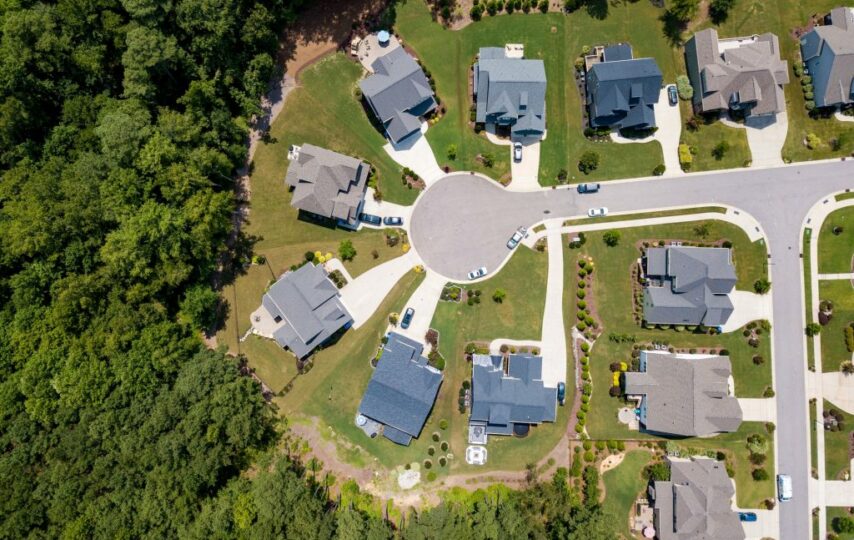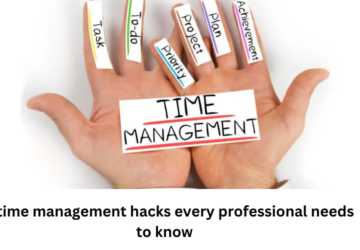Real estate marketing heavily relies on high-quality imagery, and real estate agents and buyers alike consider photos to be a crucial element in the process of selling and buying properties. High-quality photography is particularly effective in driving sales, with over 61.3% of brokers acknowledging its importance. Additionally, potential buyers are more likely to visit properties with good pictures.
With the rise of drone technology, aerial photography has become an increasingly popular option for real estate photographers to create stunning stills and videos. However, mastering aerial photography requires attention to detail and skill. Hence, in this article, we will take a look at the top 8 tips that will help you master the art of real estate drone photography.
8 Tips for Stunning Real Estate Drone Photography
1. Use the Right Drone Camera
When it comes to real estate drone photography, using the right camera is essential to capture high-quality images and videos. Look for a drone camera with a high resolution of at least 12MP, and if you plan to shoot videos, make sure that it can record at a minimum of 30 frames per second. Additionally, having a built-in gimbal camera will provide stability and ensure smooth flights. Investing in a high-quality drone camera will help you capture stunning aerial stills and videos that will make your real estate listings stand out. To simplify your drone purchase decision, here are some of the best drones available for real estate photography.
2. Obtain a License and Understand the Law
Before you start using your drone for real estate photography, it’s crucial to get licensed and familiarize yourself with the relevant laws and regulations. In many countries, including the United States, drone pilots need to obtain a license from the aviation authority to fly commercially. Additionally, there are rules and restrictions about where you can fly, how high you can fly, and how close you can get to people and buildings. Ignoring these regulations can result in legal consequences, so it’s essential to stay informed and compliant. By getting licensed and understanding the laws, you can fly your drone safely and legally, and avoid any legal issues.
3. Decide on Your Flight Path
The flight path of a drone is essential to capture the right angles and photographs of a property. Specialized software can be used to map out the areas to shoot, the angle, and the tilt. When photographing multiple buildings, it’s important to plan a flight and camera plan to ensure that you capture the best angles and features of each building. Some drones come with pre-programmed flight modes that can help capture unique angles. It’s crucial to plan everything in advance with your photography team to ensure a smooth and successful shoot.
4. Shoot RAW
Shooting in RAW format allows you to capture all the data from the camera’s sensor, giving you greater flexibility in post-processing. Unlike JPEG images, RAW files are not compressed or processed in-camera, which means they retain more detail and allow for more adjustments in exposure, color, and sharpness.
This can be especially important in real estate photography, where you want to showcase the property in its best light and create the perfect shot. While RAW files may take up more storage space, the benefits are well worth it for achieving professional-looking real estate drone photos.
5. Maintain a Good Variety of Shots and Angles
When it comes to real estate drone photography, it’s important to maintain a good variety of shots and angles to showcase the property in its entirety. This means capturing shots from different heights, angles, and distances to provide a comprehensive view of the property and its surroundings.
For example, you might want to capture close-up shots of the property’s unique features or aerial shots that show the layout of the property in relation to its surroundings. By maintaining a good variety of shots and angles, you can ensure that potential buyers get a complete picture of the property, which can help increase its perceived value and attract more interest.
6. Take Advantage of Natural Light
Taking advantage of natural light is essential for capturing high-quality real estate drone photos. Try to schedule your drone photography sessions during the “golden hours,” which are the first and last hours of daylight, as the sunlight is softer and warmer during these times. You should also pay attention to the weather and plan your shoots on days when there are clear skies and minimal wind.
This will help ensure that your photos are well-lit, sharp, and free from motion blur. If you need to shoot on a cloudy day, you can adjust the white balance and exposure settings in post-processing to achieve the desired effect. By using natural light to your advantage, you can create stunning real estate drone photos that will help attract potential buyers.
7. Choose Which Parts to Highlight
When taking real estate drone photos, it’s important to highlight the unique features of a property that make it stand out. These features could be a beautiful garden, a scenic view, or any other exceptional area. By emphasizing these standout areas, you can create a focal point that draws the viewer’s eye and sets the property apart from others.
However, it’s crucial to ensure that the photos still showcase the entire property and not just the standout features. You can achieve this by using composition techniques such as leading lines or increasing the lighting in those areas. Ultimately, the goal is to showcase the property’s best angles and features in an authentic and visually pleasing way.
8. Get Your Shutter Speed Right
Setting the correct shutter speed is crucial for capturing high-quality aerial photographs. With drone photography, a faster shutter speed is typically ideal because the drone is rarely entirely stable, even when hovering in place. This instability can result in blurry or out-of-focus photos, particularly on windy days. By using a faster shutter speed, you can capture sharper images that aren’t affected by drone movement or vibrations.
Additionally, a faster shutter speed can help keep moving subjects like cars or bike riders in focus, allowing you to capture dynamic and compelling images. To ensure the best results, it’s essential to experiment with different shutter speeds and settings until you find the optimal settings for the specific conditions and subject matter you’re photographing.
Final Thoughts
Getting the best real estate drone photos doesn’t have to be difficult. With these 8 tips, you can get great shots that show off properties in a beautiful and impressive way. If you’re just starting out with real estate drone photography, practice makes perfect! Spend some time experimenting with different angles and techniques until you find what works best for your projects. You’ll be taking amazing real estate photos in no time.








